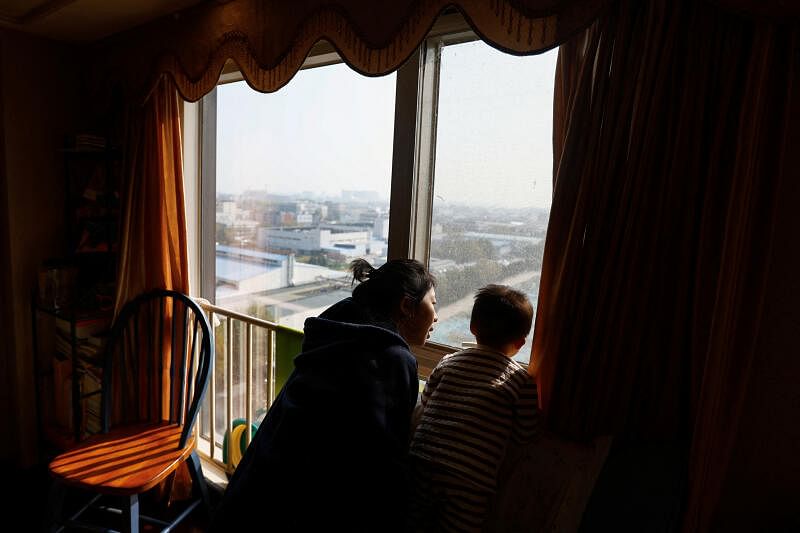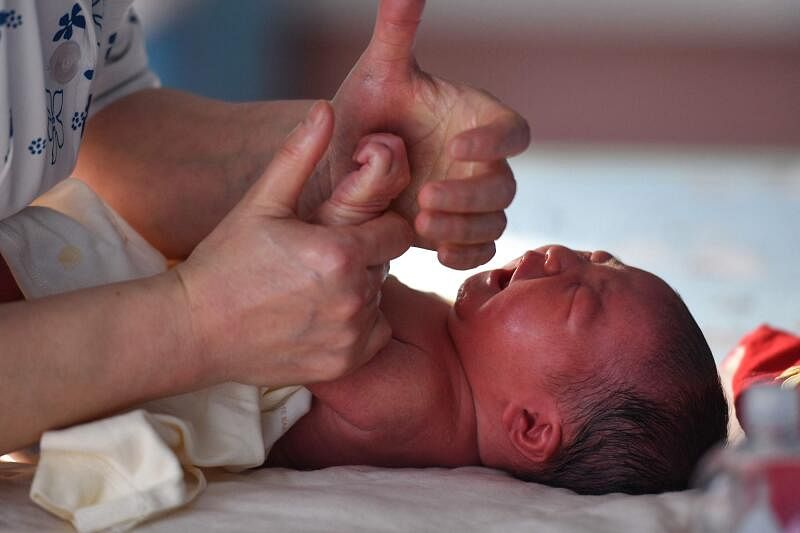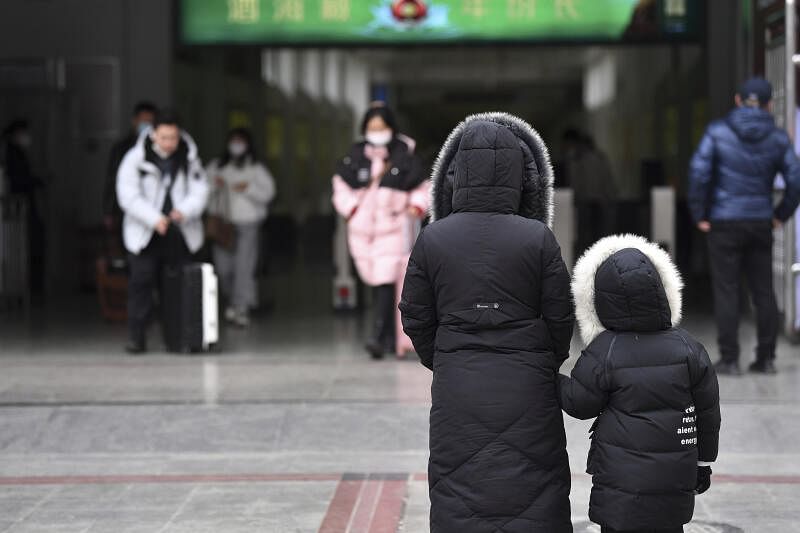
China's population accountsAfter more than 40 years of amazing growth, it has increased from 660 million to 1.4 billion. However, after that, China's population growth has slowed down, and last year, the first time in more than 60 years has shrunk.This was the first time since the Great Leap Forward movement in the early 1960s' "Great Leap Forward".
The National Bureau of Statistics of China announced on Tuesday (January 17) that the population in 2022 decreased by 850,000 compared with 2021, reaching 1.4117.5 billion people.Although the government tried to encourage people to give birth, the data showed that the number of births in birth last year dropped from 10.62 million to 9.56 million in 2021, and the birth rate decreased from 7.52 to 6.77, the lowest level since 1950.
At the same time, the number of deaths is 10.41 million, which is slightly increased from about 10 million in recent years.After the official suddenly abandoned the dynamic clearance policy in early December last year, China's crown -related death cases began to surge last month.Because the peak of death is often a few weeks later than the peak infection, and the infection is still spreading across the country, more crown -related death cases may occur this year.
In the past few years, from time to time, Chinese society mentioned issues about aging and declining childization. It can be said that the public has continuously accumulated "population anxiety."However, the population data just announced last year still made many people feel unexpected.有中国微博网民就说:“知道这一天总要到来,但没想到这么快来了,还是有些惆怅,一个新的周期来了。人口红利最后一个机会要把握好。”也有网民认为,人口It was impossible to rise all the time, not to mention that there are too many factors to consider children now, "really can't afford it."
The Chinese stock market also responded.Chinese stocks related to infant supplies or parenting immediately declined immediately after the above news came out. For example, Ningbo David Medical Device Company, which deeply cultivates the clinical discipline of newborn, plummeted by 11%.China Feihe Company, a formula for formulating in Hong Kong, has also fallen by more than 3%.
Reuters reported that in the long run, UN experts expect that by 2050, the Chinese population will decrease by 109 million, which is more than three times that of the previous predictive population decrease in 2019.

The Population and Labor Green Paper released by the Institute of Population and Labor Economics of the Chinese Academy of Social Sciences in early 2019 states that the Chinese population will reach the highest peak level after 10 years, that is, 2029, that is, in 2029.Negative growth.China National Population Plan (2016-2030) also predicts that the fertility rate from 2020 to 2030 is stable at 1.8, and the population will only begin to grow negatively in 2031.
In these predictions, China's population has a negative population growth.
So what does it mean for China's largest population and the world's second largest economy in advance?
According to Bloomberg, the decline in China's population is significantly faster than previous expectations, which may lead to a decline in demand for new residential products and other products, thereby curbing economic growth.Due to the decline in population, China's economic scale may be difficult to surpass the United States.As early as October last year, the model built by Bloomberg showed that due to the long -term impact of dynamic zero -epidemic prevention policies and decreased fertility rates, China may be difficult to surpass the United States to become the world's largest economy within 10 years.
The Wall Street Journal quoted Yi Fuxian, a scientist of Wisconsin University, the University of Wisconsin University, who has long studied China's population problem, and analyzed that the demand for real estate is weakened, and real estate is the pillar of China's economic growth.He believes that some people expect that the Chinese economy can recover strongly after the end of the "dynamic clearance" policy. Now it seems that this expectation may be too optimistic.
The New York Times also pointed out that the trend of population atrophy is accelerating another worrying situation: one day, China will not have enough labor forces to promote high economic growth.It has made China an engine of the global economy.The shortage of labor will also lead to a reduction in taxation, making the pension system that has already undergone tremendous pressure.

Many media have been reported in the past few years that China ’s labor costs have risen under the promotion of reduced labor force.Many foreign companies therefore transferred low -profit labor -intensive manufacturing industries from China to countries with rich labor and relatively low costs, such as Vietnam, Bangladesh and India.
But in the mouth of Chinese officials, there is no need to feel pessimistic.The Director of the National Bureau of Statistics of China said at a press conference on Tuesday: "At present, the labor force of my country (China) is generally more supply than demand, not to say that the total population is reduced, and the demographic dividend is gone. , Per capita education level has been nearly 11 years, and it matches our entire industry. This is a good labor supply status. "
Kangyi also shouted at the trend of the negative population, saying that the population growth is negative growth It is the result of economic and social development to a certain stage, and many countries are taking this road.
Indeed, in the process of getting rich and developed, many countries have faced problems such as the birth rate of the population and the aging of the population. The most well -known examples include Japan and South Korea.
However, the scale of Japan and South Korea is not the same level compared to China. It is the same "opponent" of China in this regard, and it is another big country of population India.

Like China, India currently has about 1.4 billion people, but unlike China, the Indian population is still growing, although the speed is slowing down.The prediction released by the United Nations in July last year showed that India will surpass China this year and become the country with the largest population in the world.
Some experts believe that this result may have an impact on global security order.British Broadcasting Corporation (BBC) quoted Wilmos, director of the Ministry of Economic and Social Affairs of the United Nations Department of Economic and Social Affairs, said: "I think (as a country with the largest population) you have a certain right."It has always been related to the National Security Council's permanent member of the country.
India is one of the founding members of the United Nations, and it is reasonable that it is reasonable to obtain the requirements of obtaining the seats of permanent members.There are five permanent members of the United Nations Security Council, including China.
American News website Axios last Friday (13th) also agreed to this, and said that India has become the country with the most population in the world, which may have a significant economic and social impact on the two countries of India and China.It may ultimately affect trade flow and subvert global power balance.
The article also mentioned that in the context of India's population growing and more and more manufacturers' departure from geopoliticsThe dominant position of China as the world factory will continue to weaken, and India will benefit.The article also quoted Yi Fuxian, "Many production capacity will be transferred to India ... There will be more and more products made in India in the US market."India assembled the latest iPhone.In the past, most iPhone was assembled by Taiwan companies such as Foxconn, which was a major breakthrough in large factories in mainland China.

Back to the first subject of decreased population in China, many reports and experts have given analysis and insights. The objective reasons include a policy of one child and the cost of parenting.And the crown disease epidemic that has been raging around the world in the past three years.
Because of the concerns of the too much population to bring a heavy burden on socio -economic, China began to implement a family planning policy in the 1970s.In 1982, the "one -fetalization" family planning policy became China's basic national policy. Since then, the concept of fertility of the Chinese people has been changed.The problem was buried.
A researcher at the University of Victoria, Australia, Peng Xiujian (translated, Xiujian Peng) told AFP that the Chinese "have been used to small families because of decades of childhood policy."
However, about 30 years later, as the number of births and birth rates continued to decline, China's "one -fetalization policy" gradually relaxed.It is the only child to have a second child); in 2013, the "separate two children" was launched in 2013 (as long as one of them is one of the only children, they can have a second child); by 2015, the two -child policy is fully implemented;"Three children".
The Chinese government has also promulgated a series of incentive measures to encourage fertility for couples and small families, including cash subsidies, tax cuts, and even house purchase discounts.For example, in Shenzhen, the local government provides fertility allowances and distributed parenting allowances until the child is three years old.
But these measures have not changed many young Chinese who do not want their children's basic reality at all.For them, the cost of raising children is getting higher and higher, but the economy is not so stable.Some Weibo netizens said: "I can't afford myself, where can I raise money?" Some netizens also criticized: "The cost of raising costs and the expenses of looking for a house in a good school district have continued to rise, but the salary has remained at the same level."Essence
At the same time, more and more young women put their career development on the formation of families, far away from the values preached by the older generation, such as concentrating on bringing children at home after birth.After the official release of the Chinese population decreased on Tuesday, these two topics appeared on Weibo hot search: "It should be less important for women's marriage and childbearing choices" "Is it really important to have offspring?"The new generation of women no longer regard fertility as the top life.

A Weibo netizen said: "The fundamental reason why a woman does not want to have children is not on themselves, but that society and men do not assume the responsibility of raising their children. For fertility womenThis will lead to a serious decline in their quality of life and spiritual life. "
In addition, China's strict" zero "policy in the past three years, including large -scale detection, isolation, and blockade, which has also led to some familiesLong -term separation and prompting more people to refuse to give birth.
Professor of the School of Economics of Nankai University and Vice President of the Chinese Population Society, former New Tuesday, reported on the Chinese official media, said that the negative growth of China's population indicates that the development of China's population has entered a new stage, which will be the economic and social system system. This will be the economic and social system.Bring new challenges, but also provide corresponding new population opportunities.
"The different stages of population development provides different population opportunities for economic development. It must attach great importance to the transformation of population opportunities, and in -depth analysis of the population characteristics and population opportunities at different stages.The negative growth of the population will reduce the pressure of the total population of the resources and the environment. "
As the" largest country "for many years, China is facing a historical turning point.This is a new reality and a challenge of a century -long change. The key is whether China can focus on improving the quality of the population and promote the transformation of "population dividends" to "talent dividends".



